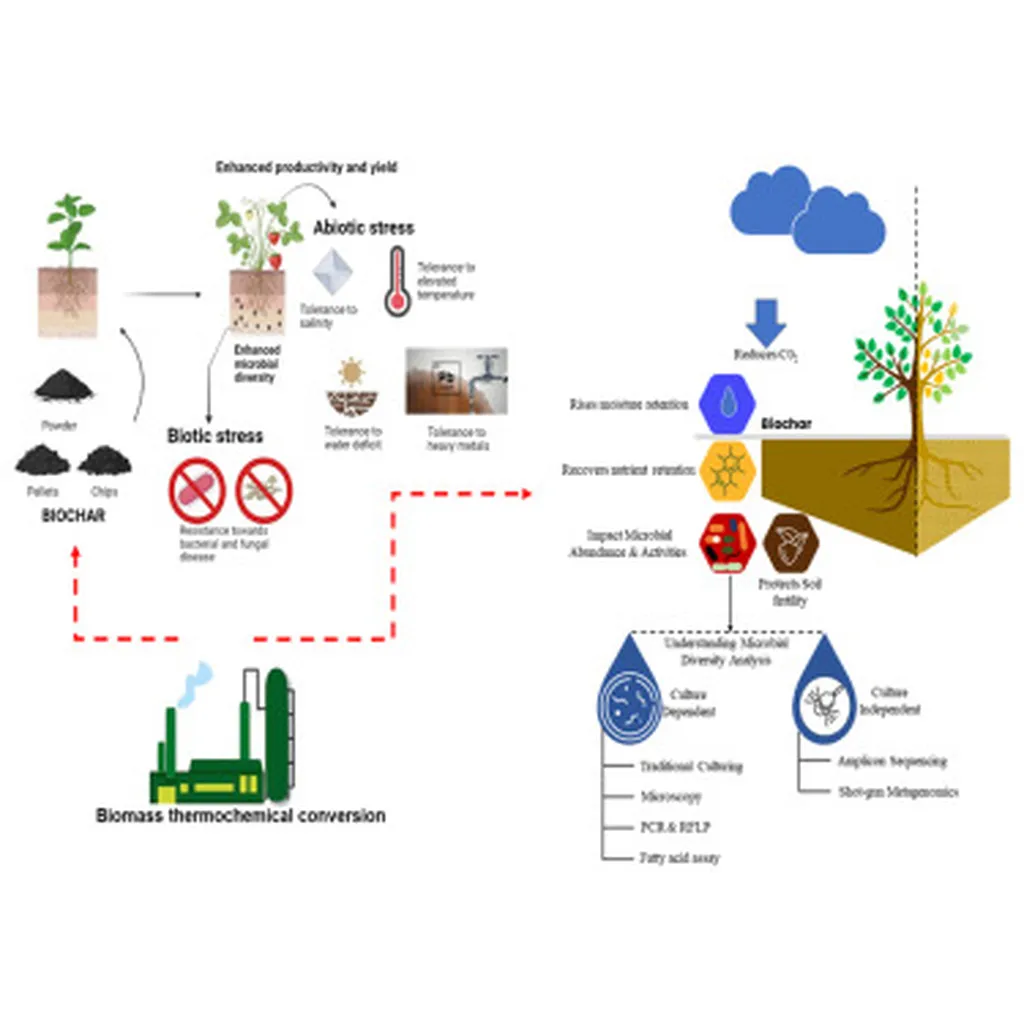In the heart of Shanxi, China, a team of researchers led by Qiang Wang from the College of Forestry at Shanxi Agricultural University has uncovered a promising approach to tackle heavy metal contamination in soils, with potential ripples extending into the energy sector. Their study, published in the journal *Biochar* (translated to English as “Biochar”), explores the dual benefits of phosphorus (P)-modified biochar: immobilizing heavy metals and enhancing soil quality. But the real twist lies in how this innovation reshapes the microbial communities in contaminated soils, offering a glimpse into future agricultural and environmental practices.
Heavy metal contamination near mining areas poses significant challenges to soil health and agricultural productivity. Wang and his team set out to investigate how P-modified biochar, created by co-pyrolysis of apple tree branches with K3PO4, could mitigate these issues. Their findings revealed a substantial reduction in bioavailable cadmium and lead in the soil—28.21% and 28.64%, respectively—primarily through improved co-precipitation and cation exchange. This reduction translated to lower heavy metal concentrations in maize grains, a critical crop for both food and biofuel production.
But the story doesn’t end with heavy metal immobilization. The research delved deeper, examining how P-modified biochar influences soil microbial communities. “We found that adding P-modified biochar significantly decreased the richness and diversity of soil bacteria,” Wang explained. This shift wasn’t arbitrary; it was driven by changes in nutrient supply, particularly nitrogen and phosphorus. The team’s analysis of microbial multi-trophic ecological networks and partial least squares pathway modeling highlighted how biochar altered the soil’s capacity to provide these essential nutrients, prompting key microbial taxa to adapt.
Modules 1 and 3 emerged as pivotal players in this microbial ecosystem, with opposing roles in the nitrogen and phosphorus cycles. “These modules played crucial but contrasting functions in the soil’s nutrient dynamics,” Wang noted. The study underscored that changes in heavy metal bioavailability had a negligible effect on microbial communities compared to nutrient supply shifts. This insight could reshape how we approach soil remediation and agricultural practices, emphasizing the importance of nutrient balance in fostering healthy microbial ecosystems.
For the energy sector, the implications are profound. As biofuels like maize-based ethanol gain traction, ensuring the quality and safety of feedstocks becomes paramount. P-modified biochar offers a sustainable solution to heavy metal contamination, safeguarding crop yields and reducing the risk of toxic elements entering the food chain or biofuel production processes. Moreover, the technology’s ability to enhance soil quality could boost agricultural productivity, benefiting both farmers and energy producers reliant on biomass.
Looking ahead, this research opens doors to further exploration. How might P-modified biochar be tailored to address other contaminants or soil types? Could similar approaches be applied to restore degraded lands, supporting both agriculture and renewable energy initiatives? As Qiang Wang and his team continue to unravel the complexities of soil-microbe interactions, their work could pave the way for innovative, sustainable solutions that bridge the gap between environmental remediation and energy production.

